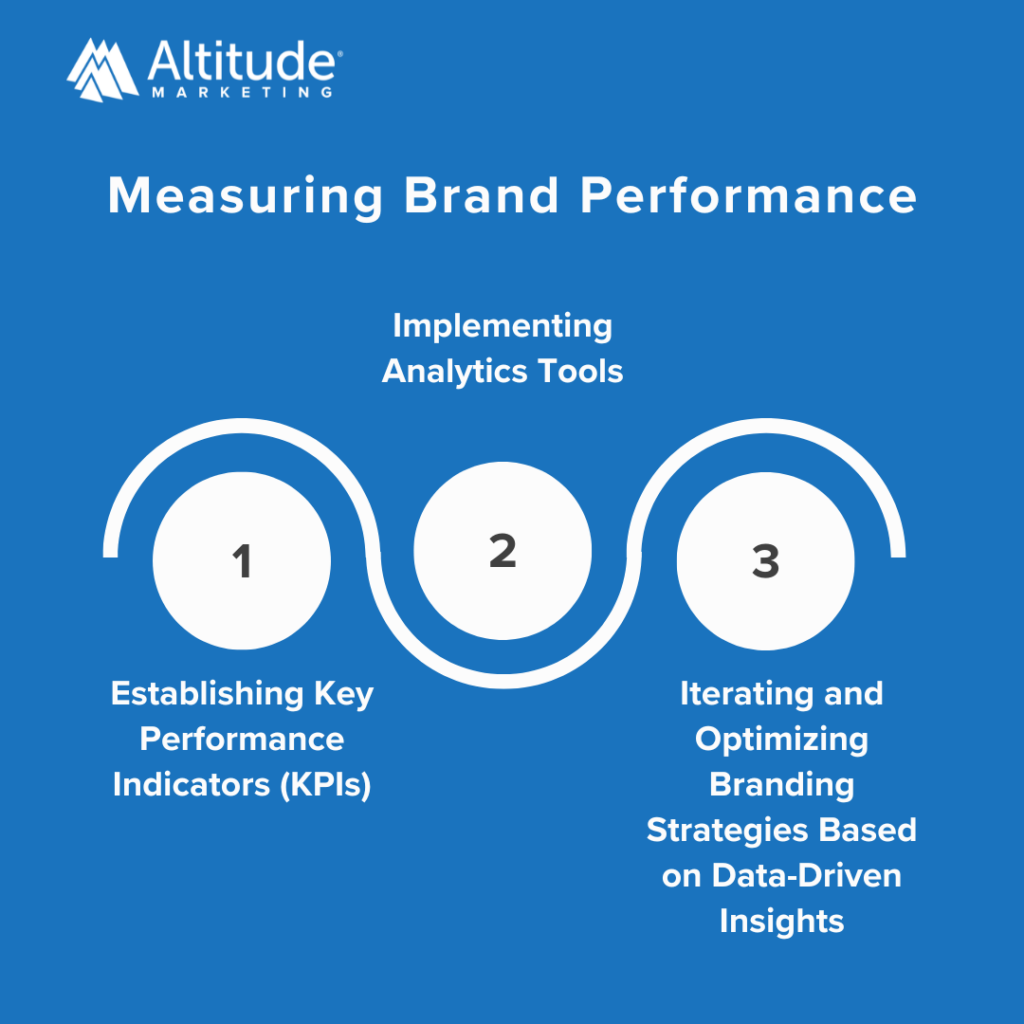For the life sciences industry, branding is much more than just a marketing tool. It’s a strategic necessity. It builds trust, credibility, and superiority against your competitors. You’re in an industry of niches–and niches within those niches. But whether you’re a global CRO or a biotech startup, your brand matters. And there is a universal set of guidelines that can ensure it doesn’t just last–but grows. Here are eight fundamentals to building an outstanding life sciences brand.

An 8-Step Guide to Effective Branding in the Life Sciences Sector

Understand the Life Sciences Niche
Estimates set the life sciences industry at $47.5 billion by 2027. It is the result of elevated R&D spending and scientific advancements. Within this expansive sector lie fields such as:
- Biotechnology
- Pharmaceuticals
- Medical devices
- Healthcare services
Each presents its own set of branding challenges and opportunities. But one thing holds true, 73% of customers prefer brands that align with their values. Tailoring branding efforts to the ethical and social priorities of the life sciences industry is paramount.

Establish an Identity
This starts internally. Put your mission statement and company values in writing–and make sure the entire leadership team is aligned. You need to present a consistent message to the wider world, so the earlier and stronger this positining occurs, the better you’ll be as your business grows.
Research indicates that 89% of customers remain loyal to brands that share their values. At the same time, companies with a compelling brand story experience an increase in revenue. Your story starts with your visual and verbal identity. Create visual and written style guides to build consistency, and ensure your entire team knows the tone, message, and position you want presented to your customers.

Analyze Your Target Audience
A brand only works when it resonates with your specific audience. In the life sciences, that audience could be small–which makes it that much more crucial to craft one that resonates. This takes research, starting with a detailed customer persona. Conduct both quantitative (user surveys, SEO audits, social media analysis) and qualitative (industry interviews and observation) to know exactly who you are targeting. You can then build off that persona to start refining your messaging and positioning.
Build Authority with Thought Leadership

Expertise and innovation are the most valuable currency in life sciences brand building. You need to display competence and intelligence with your peers. That starts by aligning with the foremost thought leaders in your specific space. You can do this by:
Positioning Industry Experts as Brand Ambassadors
They may be right in your lab or in academia, but no matter where the foremost experts in your field operate, make efforts to ally with them and build them as ambassadors to your cause. You might not think it in the traditional viral social media sense, but these experts are also influencers. They can lend credibility and authority to your brand. By showcasing their expertise through various channels, brands can grow. You can use their voices in marketing assets like blogs, interviews, and speaking engagements. As a result, the brand ambassadors become trusted voices in the industry.
Developing Content Marketing Strategies
Content is king, especially in the digital age of marketing. Brands can show thought leadership by creating high-quality, informative content. It must address pressing pain points, trends, and innovative ideas in life sciences. This can include:
- Whitepapers
- Research reports
- Case studies
- Insightful articles
Content showcases abrand’s depth of knowledge and understanding of the industry.
Harness Speaking Engagements, Webinars, and Publications
These methods are excellent opportunities for a brand to shift away from surface-level sales strategies into a more organic, authoritative position in the sector. Tactics can include:
- Speaking engagements at industry conferences
- Hosting webinars
- Contributing articles to reputable publications
These platforms enhance brand visibility and position the brand as a go-to resource. That provides inherent value well before a sale is even closed.
Build Strategic Partnerships

Strategic alliances are the driving force behind large brands’ intent to win a bigger share of the market and build clients’ trust. Additionally. Three partnership fundamentals include:
Cultivating Relationships with Complementary Businesses and Organizations
By its nature, the life sciences industry requires partnership. From research to development to distribution to compliance, no single company owns the entire production journey of any given product or innovation. That means your brand has the opportunity to align with others that complement your product. Strategic alliances can facilitate knowledge extension, sharing of resources, and mutual assistance. You may refer to research institutes, college centers, or research and technology-oriented industries.
Working with Joint Ventures, Research Projects, Conferences, and Events
They provide avenues for brands to pool resources, expertise, and networks. Together, they tackle common issues and pursue shared goals. By leveraging each other’s strengths and capabilities, brands can:
- Speed up innovation
- Drive market penetration
- Create synergistic value for stakeholders
Leveraging Partnerships to Enhance Brand Visibility and Reinforce Industry Leadership
Strategic partnerships offer opportunities for brands to amplify their visibility within the industry. By accomplishing the following, brands can enhance their reputation as innovative leaders. They’ll be known as trusted collaborators in the life sciences:
- Co-branding initiatives
- Participating in industry consortia
- Showcase collaborative achievements
Compliance and Ethical Considerations
Ensuring adherence to regulatory standards and industry guidelines is essential. It will aid you in maintaining a strong brand integrity within the life sciences industry. Integrating ethical principles into branding strategies and messaging assists in mitigating risks. Those are often associated with sensitive topics such as healthcare ethics and data privacy.
Measure and Refine

Your brand should never be stagnant. It takes constant testing, measuring, and refining to stay relevant and continue to grow–precisely the same philosophy your organization takes in its core products. Here are key steps brands can take to measure brand performance:
Establishing Key Performance Indicators (KPIs)
Identify and define relevant KPIs that align with brand objectives. This is the first step in measuring brand performance. Establishing clear metrics enables brands to track progress and evaluate success over time. The most common KPIs include brand awareness, engagement, sentiment, and conversion rates.
Implementing Analytics Tools
Leveraging advanced analytics tools allows brands to collect, analyze, and interpret data. Those are all related to brand performance. Investing in robust analytics infrastructure provides valuable insights into the following:
- Audience behavior
- Campaign effectiveness
- Market trends
The tools used range from social media to web analytics platforms.
Iterating and Optimizing Branding Strategies Based on Data-Driven Insights
Data-driven decision-making is crucial for refining branding strategies and maximizing ROI. Keep tracking and analyzing performance data. With it, brands can identify strengths, weaknesses, and areas for improvement. You will then be able to iterate and optimize strategies for better results.
Incorporating these practices into branding efforts assists brands in gauging their impact. It enables them to adapt in response to changing dynamics and client preferences. By prioritizing the following, brands can strengthen their competitive edge. They’re able to drive long-term success in the life sciences sector.
- Thought leadership
- Strategic partnerships
- Data-driven decision-making
Publish Case Studies and Best Practices
Just like your work in the life sciences requires proof, so does your brand itself. You will only become authoritative by offering resources that display your expertise. One of the most effective ways to do this is crafting materials that go under the hood. Prominently and frequently publish case studies, white papers, and your best practices. Content like this helps establish trust and accuracy as a core tenet of your brand.
Life Sciences Brand FAQs
What types of brands are in the life sciences?
The term “life science” is an umbrella term that encompasses various sciences. Each of those strives to make the quality of life better for mankind. Companies that are focused on the research, development, distribution, and compliance of products and services that make humans healthier would be considered part of the life sciences industry.
How can branding strategies enhance the image of life sciencesorganizations?
Life sciences branding is a necessary step for organizations to create a unique identity and build patient trust. Investing in branding in the life sciences sector can aid you in attracting and retaining customers.
How does branding aid life sciences business grow?
A company’s brand is one of its most important assets, even in the life sciences industry. It gives your business an identity, making it memorable among customers. At the same time, it encourages customers to support you and your marketing efforts. As a result, the brand becomes part of your employees’ pride as well.
Incorporating these strategies and insights into your branding efforts can help drive trust. You will look more credible and unique in the competitive space of the life sciences sector. Start implementing these steps today to elevate your brand presence and impact in the industry.
Conclusion
Effective branding in the life sciences sector requires a strategic and tailored approach. It must address the unique problems within the industry. At the same time, it must take advantage of the opportunities provided in the digital space. By accomplishing the following, brands can elevate their presence and impact in the sector:
- Defining core brand values
- Understanding the target audience
- Using thought Leadership and strategic partnerships
Continuous adaptation and adherence to ethical principles are essential for long-term success.



